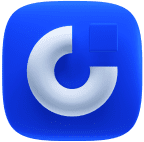Accessibility at Onepage
Onepage is committed to progressively implementing digital accessibility. Our goal is to enable small and medium-sized businesses (SMEs) to create websites with Onepage that comply with modern accessibility standards.
We align our technical development with the Web Content Accessibility Guidelines (WCAG) 2.1, Level AA, the requirements of the German Accessibility Strengthening Act (BFSG), and the underlying EU Directive (2019/882).
Current Implementation Status
We are currently enhancing our platform to fully support the creation of accessible websites.
Roadmap:
From July 2025: Gradual rollout of the first accessibility-related improvements
Q4 2025: Systematic expansion of accessible functionality and structures
Q1 2026: Goal: technical implementation of core accessibility areas largely completed
Market Reality: We Are Not Alone
Implementing digital accessibility is a complex challenge — one that affects not only small companies but also large platform providers. International players such as Shopify and Adobe have also announced that they are implementing accessibility features in phases.
Onepage embraces this responsibility in the same way — we communicate transparently about our current progress and are committed to a practical and realistic implementation in close coordination with our users.
Support and Tools for Our Users
As content creators, our customers also contribute to overall accessibility. To support this, we offer the following tools and recommendations:
External Testing Tools:
Optional Accessibility Widgets:
Note: These overlays may provide temporary support but do not replace full WCAG compliance.
Guides and Resources:
- Step-by-step accessibility content creation guides
- Tutorials for using our templates with accessibility in mind (coming soon)
Recommendation for SMEs: Your Own Accessibility Statement
If your business is subject to the BFSG, we recommend publishing your own accessibility statement on your website.
Such a statement is not only good practice, but can also help to:
- Reduce legal risks during the transition phase
- Demonstrate transparency to regulatory bodies
- Clearly communicate your company's commitment to inclusion
Even if your site is not yet fully accessible, a public accessibility statement signals that you take the topic seriously and are actively working toward compliance.
Disclaimer: This recommendation does not constitute legal advice. Please consult your legal counsel or regulatory authority for guidance.
Helpful tools:
Contact and Feedback
We continuously strive to improve. If you have questions, feedback, or have discovered a barrier, please contact us at:
📧 accessibility@onepage.io
Accessibility is not a final state, but an ongoing process. Thank you for joining us on this journey.
